Developing Time Management Skills in Children with Autism: 7 Tips
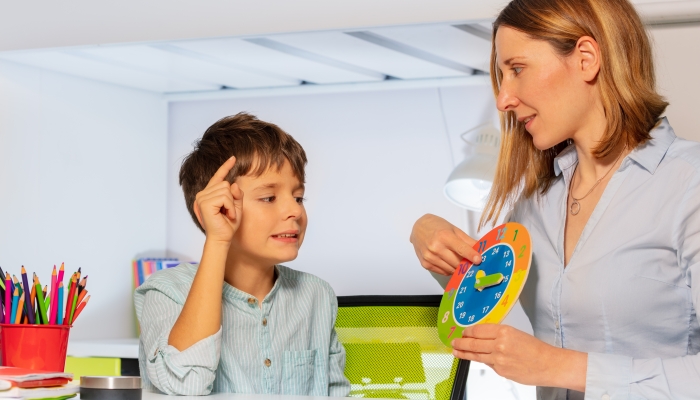
- Tapping into your child’s preferences for routine and structure can help teach the concepts of time and time management.
- Visual aids offer objective information about the order and sequence of tasks.
- Help your child with autism learn how to prioritize the importance of tasks while recognizing this skill takes time for all children to learn.
Does this scenario sound familiar?
It’s a weekday morning. You need to get the kids ready and off to school before having a busy morning at your job. As you hurry to make lunches and remind the kids to brush their teeth, your child with autism is laser-focused on their most recent special interest.
Oblivious to your prompts that you have to leave right now, your child with autism continues to play, only to be surprised as the rest of the family hustles out the door.
Have you ever wondered why it is that children with autism seem to struggle with task planning and other time management skills?
The answer may be more universal to neurodivergent children in general than only those with autism.
Like their neurodivergent peers, children with autism can struggle with executive functioning abilities like the concept of time, time management skills, and prioritization of tasks. These are vital skills for getting out the door promptly or completing school-related activities like homework.
In combination with time, practice, and a whopping dose of patience, consider the following 7 tips to help you teach time management skills to your child with autism:
1. Establish a Routine

Many children, whether or not they are neurodivergent, have a fluid concept of time.
This fact occurs largely as a result of structural brain differences11. Pujol, J., Blanco-Hinojo, L., Macia, D., Martínez-Vilavella, G., Deus, J., Pérez-Sola, V., Cardoner, N., Soriano-Mas, C., & Sunyer, J.. Differences between the child and adult brain in the local functional structure of the cerebral cortex. NeuroImage. 2021;237, 118150. https://doi.org/10.1016/j.neuroimage.2021.118150 as compared to an adult.
Further, known differences in the brain anatomy22. Wilkins, F.. How Is the ADHD Brain Different? Child Mind Institute. 2024. https://childmind.org/article/how-is-the-adhd-brain-different of neurodivergent children33. Hashem, S., Nisar, S., Bhat, A. A., Yadav, S. K., Azeem, M. W., Bagga, P., Fakhro, K., Reddy, R., Frenneaux, M. P., & Haris, M.. Genetics of structural and functional brain changes in autism spectrum disorder. Translational Psychiatry. 2020;10(1). https://doi.org/10.1038/s41398-020-00921-3 can make this loose concept of time even more problematic.
Establishing a consistent rhythm and routine is an important way to help your child learn the important life skill of time management.
2. Be Consistent

Children with autism frequently struggle with interpreting social cues and knowing what’s expected of them in certain situations.
For instance, your child may not make the connection between your rising frustration and their lack of readiness for a given activity.
Consistently using and enforcing a daily schedule (Yes, even on the weekends!) allows you to tap into your child’s preferences for structure by helping them organize events chronologically.
The use of a regular daily schedule helps children with autism internalize structure and expectations, which is foundational to developing time management skills.
3. Create a Visual Schedule

A visual schedule44. Visual schedule. Autism Hub. 2023. https://autismhub.education.qld.gov.au/resources/functional-behaviour-assessment-tool/visual-schedule refers to symbols, pictures, photographs, or words that provide visual input about planned events. They can be used to identify a sequence of events (first, next, then, etc.), the steps in a set activity, or describe the events of an entire day.
Because children with autism tend to be concrete thinkers, using a visual schedule may eliminate some of the uncertainty as your child learns to designate a set amount of time to accomplish a certain task.
Consider these suggestions55. How to Make a Visual Schedule. Occupational Therapy Helping Children. 2023. https://occupationaltherapy.com.au/how-to-make-a-visual-schedule from an occupational therapist as you begin planning a visual schedule for your child:
- Begin by choosing a routine or skill you’d like your child to focus on. In this example, we’ll work through teaching children to brush their teeth independently.
- Break down the activity into smaller steps. Visualize steps that are innate to you, such as gathering the toothbrush and toothpaste, how much toothpaste to squirt on the brush, etc.
- Decide how long the schedule will be by using a length of time that is reasonable at the moment and adjusting it where necessary. Maybe your child has sensory processing challenges that make brushing their teeth unpleasant and working through those oral challenges is part of the daily process of brushing their teeth. As you work through the visual schedule and your child takes ownership of the care of their teeth, it would be reasonable to expect this task to get shorter over time.
- Choose an appropriate visual format. This can include downloaded pictures of various tasks, symbols, drawings, or even pictures you’ve taken with your phone and printed out.
- Instruct your child how to complete the task and follow the schedule. Remember, this will require time, effort, and patience on your part, along with physical and verbal guidance.
- Teach your child that there is a visual indicator of when they’ve finished the task. This could look like putting their toothbrush back in the holder or moving a picture on the visual schedule to a “finished” side.
- Always end with positive reinforcement! Your child will be more likely to repeat the desired skill or behavior when they receive encouragement and praise after appropriately completing the scheduled task. Consider stickers, a warm hug and kiss, or something related to their favorite special interests.
Visual schedules can be easily adapted as your child learns the skill or requires adjustments to the process, and would, ideally, be posted close to where the task itself will take place.
4. Use Transition Techniques
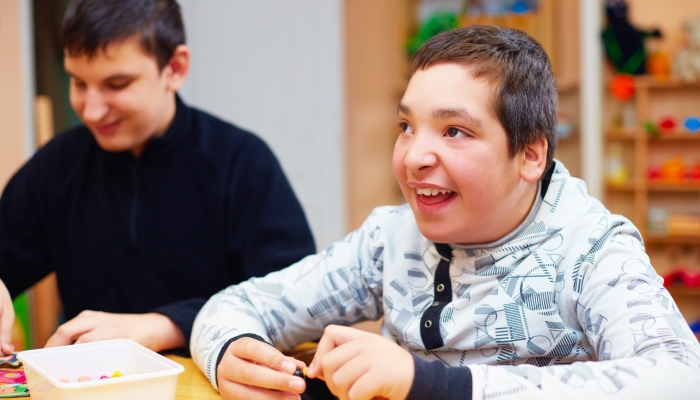
Children with autism frequently struggle with the transition from one activity to another. For that matter, their adults often struggle too. (When’s the last time you wanted to put your phone down to go make dinner?)
Transition techniques66. Hume, K.. Transition Time: Helping Individuals on the Autism Spectrum Move Successfully from One Activity to Another. Indiana Resource Center for Autism. https://www.iidc.indiana.edu/irca/articles/transition-time-helping-individuals-on-the-autism-spectrum-move-successfully-from-one-activity-to-another.html refer to buffering strategies to aid children with autism as they are asked to move between one activity and the next. They can be used before, during, or after a transition and presented verbally, visually, or auditorily.
Transition strategies77. Martinelli, K.. How Can We Help Kids With Transitions?. Child Mind Institute. 2024. https://childmind.org/article/how-can-we-help-kids-with-transitions—like giving a preview of their day or a countdown to the next activity—should be used consistently to help children move smoothly from one task to the next as they internalize this process.
5. Teach Prioritization Skills

In simple terms, learning to prioritize tasks is a developed skill of knowing what to do when, and why.
Many children will say that everything feels equally important (such as getting ready for school and finishing their current level in a favorite video game). Consequently, they have difficulty distinguishing which task takes precedence, so this must be taught this skill.
In children with autism, these challenges may be even more pronounced due to difficulties with executive functioning tasks88. Gentil-Gutiérrez, A., Santamaría-Peláez, M., Mínguez-Mínguez, L. A., González-Santos, J., Fernández-Solana, J., & González-Bernal, J. J.. Executive Functions in Children and Adolescents with Autism Spectrum Disorder, Grade 1 and 2, vs. Neurotypical Development: A School View. International Journal of Environmental Research and Public Health. 2022;19(13), 7987. https://doi.org/10.3390/ijerph19137987 like working memory and impulse control.
6. Practice Setting Priorities

Try using these suggestions99. Beck, C.. Executive Functioning Skills- Teach Planning and Prioritization. The OT Toolbox. 2019. https://www.theottoolbox.com/executive-functioning-skills-planning-prioritization from an occupational therapist as you work to build your child’s prioritization skills:
- Give chances to practice prioritization skills by planning simple tasks that your child may already know, like building a snowman or putting together a sandwich.
- Talk about the key aspects of tasks, or what has to be done before any other step can happen. For instance, you have to have the bread ready for the sandwich before you start spreading peanut butter.
- Make lists of chores and tasks to help kids organize their thoughts. Then, ask your child to pick the top three most important items and share their thoughts on why those are the most important.
- List homework assignments and due dates, noting the things due first.
- Chunk big projects into smaller steps that can be accomplished in order of importance.
Visual tools, such as priority charts, may also be helpful as your child learns this important skill.
7. Role Play
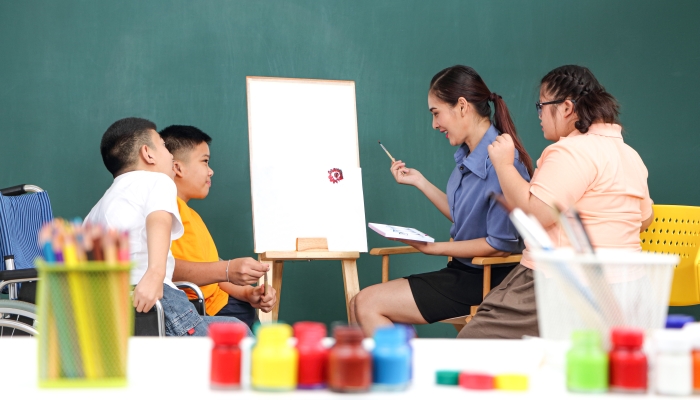
Rehearsing and talking through real-life scenarios can let children hone their decision-making skills in a non-threatening environment. Use toys or stuffed animals to add some humor to the project.
When you first set out to help your child with autism learn and refine their time management skills, the task can feel overwhelming. With time, practice, patience, and practical suggestions, your child can learn this important life skill.
References
- Pujol, J., Blanco-Hinojo, L., Macia, D., Martínez-Vilavella, G., Deus, J., Pérez-Sola, V., Cardoner, N., Soriano-Mas, C., & Sunyer, J. (2021). Differences between the child and adult brain in the local functional structure of the cerebral cortex. NeuroImage, 237, 118150. https://doi.org/10.1016/j.neuroimage.2021.118150
- Wilkins, F. (2024, April 10). How Is the ADHD Brain Different? Child Mind Institute. https://childmind.org/article/how-is-the-adhd-brain-different
- Hashem, S., Nisar, S., Bhat, A. A., Yadav, S. K., Azeem, M. W., Bagga, P., Fakhro, K., Reddy, R., Frenneaux, M. P., & Haris, M. (2020). Genetics of structural and functional brain changes in autism spectrum disorder. Translational Psychiatry, 10(1). https://doi.org/10.1038/s41398-020-00921-3
- Visual schedule. Autism Hub. (2023, November 10). https://autismhub.education.qld.gov.au/resources/functional-behaviour-assessment-tool/visual-schedule
- How to Make a Visual Schedule. Occupational Therapy Helping Children. (2023, March 4). https://occupationaltherapy.com.au/how-to-make-a-visual-schedule
- Hume, K. (n.d.). Transition Time: Helping Individuals on the Autism Spectrum Move Successfully from One Activity to Another. Indiana Resource Center for Autism. https://www.iidc.indiana.edu/irca/articles/transition-time-helping-individuals-on-the-autism-spectrum-move-successfully-from-one-activity-to-another.html
- Martinelli, K. (2024, November 1). How Can We Help Kids With Transitions? Child Mind Institute. https://childmind.org/article/how-can-we-help-kids-with-transitions
- Gentil-Gutiérrez, A., Santamaría-Peláez, M., Mínguez-Mínguez, L. A., González-Santos, J., Fernández-Solana, J., & González-Bernal, J. J. (2022). Executive Functions in Children and Adolescents with Autism Spectrum Disorder, Grade 1 and 2, vs. Neurotypical Development: A School View. International Journal of Environmental Research and Public Health, 19(13), 7987. https://doi.org/10.3390/ijerph19137987
- Beck, C. (2019, February 15). Executive Functioning Skills- Teach Planning and Prioritization. The OT Toolbox. https://www.theottoolbox.com/executive-functioning-skills-planning-prioritization
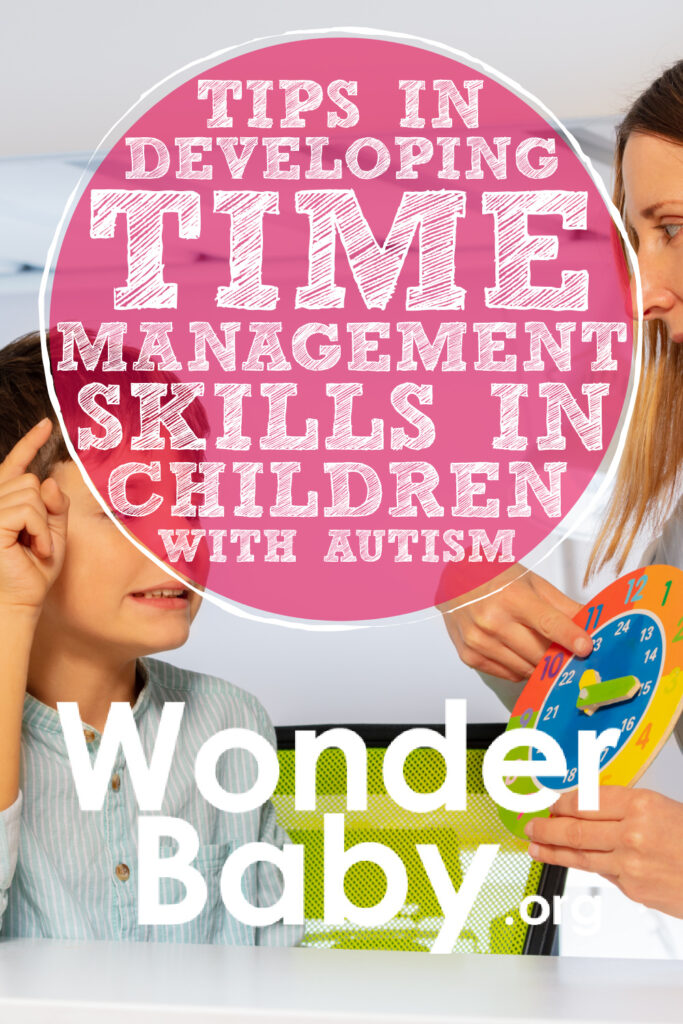
The information WonderBaby provides is not intended to be, and does not constitute, medical or other health advice or diagnosis and should not be used as such. Always consult with a qualified medical professional about your specific circumstances.
Related Posts

Autism
Occupational Therapy for Children with Autism: How It Can Make a Difference
Children with autism face challenges in many different areas. Occupational therapy can help children address these difficulties while having fun!

Autism, Behavior
OCD vs Autism in Children: How To Tell the Difference
OCD and ASD are fundamentally different, but their symptoms are very similar. Learn how to tell the difference to support your child.
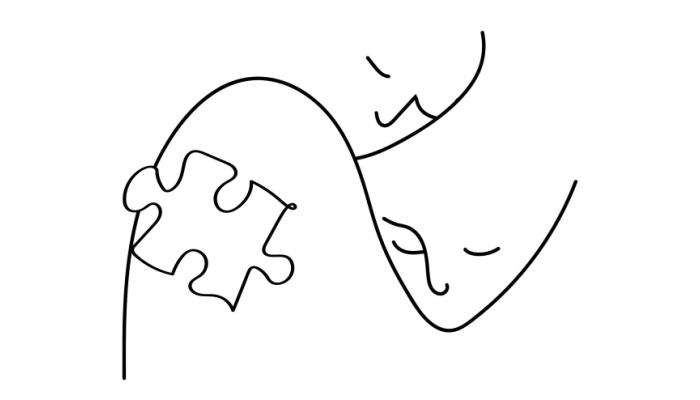
Autism
When Autism Advocacy Goes Wrong: Supporting Parents of Profoundly Affected Children
If you’re not personally affected by autism or don’t work with autistic individuals, you might be unaware of the growing debate within the autism community.